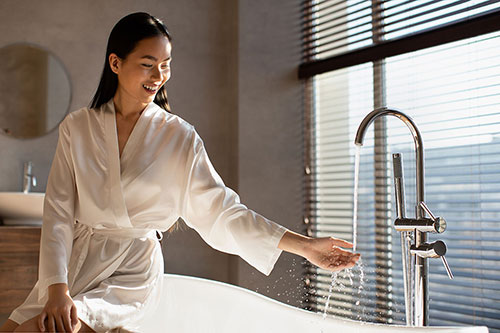
Can I Change the Temperature on
My Hot Water System?
Tempering Valves 101:
Ensuring Hot Water Safety & Efficiency
Have you ever wondered what controls the temperature of your hot water? If your first guess is the thermostat – guess again. In this blog we’ll be answering some of the most frequently asked questions about Tempering Valves.
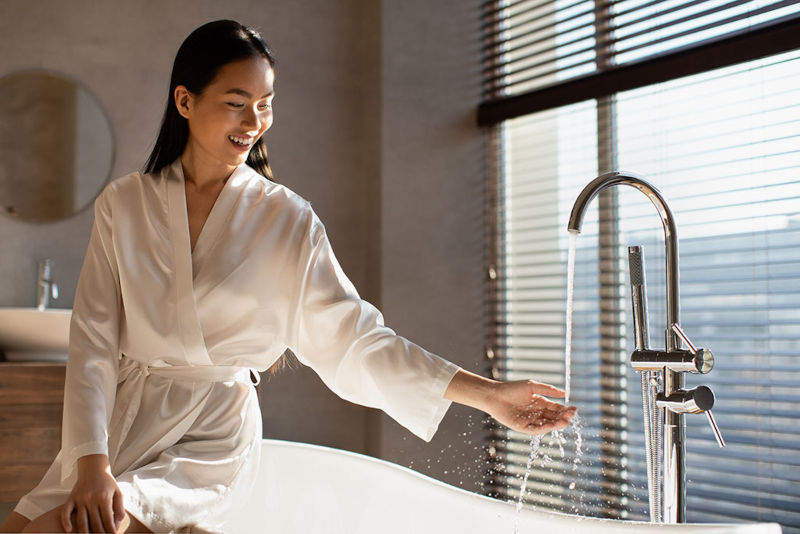
WHAT IS A TEMPERING VALVE?
Tempering valves mix hot and cold water to ensure a steady and safe temperature compliant to the Australian standard is delivered to the taps. This is usually in the range of 40 – 50 degrees Celsius depending upon the application. The use of tempering valves is important as operating hot water in this temperate range both protects people in the house from illness caused by bacteria, such as Legionnaires disease, as well as significantly reducing scalding risk.
The installation of tempering valves is not just a safety recommendation, they are mandatory for all new builds, bathroom renovations and when replacing a hot water unit and they are required to be set to a temperature not exceeding 50 degrees.
It is also important that the correct type of tempering valve is fitted based on the application and hot water unit installed. A licenced plumber will be able to determine which valve is required in your particular circumstance.
CAN I TURN MY HOT WATER TEMPERATURE UP OR DOWN AND WHAT ARE THE RULES?
Warm water is a breeding ground for bacteria like legionella. In order to combat these nasties and ensure your water is safe, storage hot water systems are required to heat water to over 60 degrees. This temperature is controlled by the thermostat at the tank. The water delivery temperature is controlled by the tempering valves and, excluding the kitchen and laundry, must not exceed 50 degrees.
Regulations surrounding tempering valves are clear. The Australian standard AS/NZ 3500.4 2018 and the associated AS4032.1 2005, outline the requirements for valves and when/where they are to be installed and operated. This covers location, set temperatures and valve specifications.
WHAT ARE THE DIFFERENT TYPES OF TEMPERING VALVES?
Tempering valves are available for several different scenarios. The “standard” Tempering valve is has been designed for residential situations and fitting to electric and storage gas systems. With a blue, yellow or sometimes green cap.
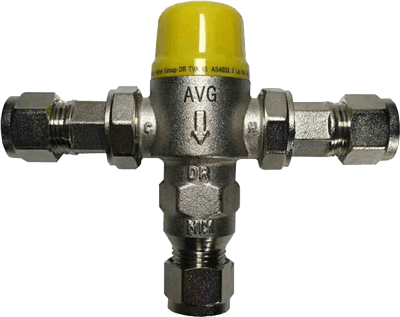
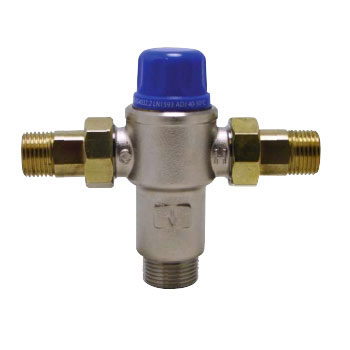
High performance tempering valves are designed for solar and heat pump hot water or for situations where long runs of pipework are installed. These valves have tighter tolerances and can deal with higher incoming temperatures. You’ll identify these by the orange caps they have fitted.
These high performance tempering valves are adjustable between 40 degrees and 50 degrees and are designed primarily as safety devices. However, there is one model that is designed as a first stage tempering valve which is adjustable between 60 degrees and 77 degrees. These usually have a red cap and are best suited to commercial or industrial applications.
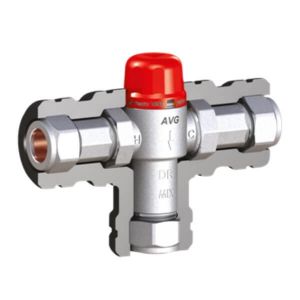
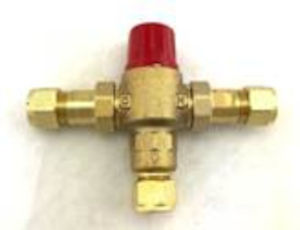
Whether it’s for your home, office or a commercial site application, there is a tempering valve to suit the situation. These are all available in sizes from 15mm – 25mm depending on the flow rate requirements you have. To find the right valve to suit your situation you need to first establish what type of hot water unit you have. Speaking with our team of qualified hot water plumbers will then allow us to guide you the rest of the way. We can install the correct valve and submit the relevant form 4 to QBCC.
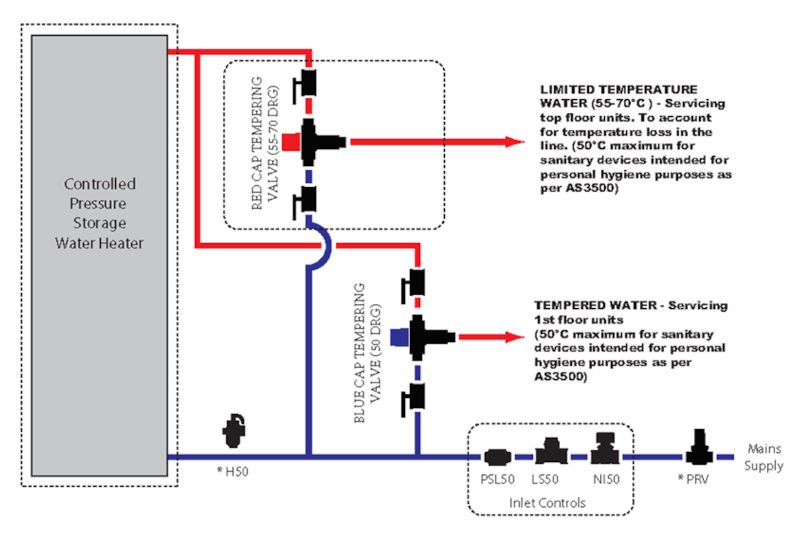
CAN TEMPERING VALVES BE ADJUSTED?
Tempering valves generally come pre-set at 50 degrees. The temperature can be adjusted up or down however it is important to remember that current requirements mean adjusting to temperatures above 50 degrees isn’t allowed. If you’re wanting to lower the temperature of your hot water, contact our team of licensed plumbers and we’ll happily be able to assist.
WHAT IS THE DIFFERENCE BETWEEN A TEMPERING VALVE AND A THERMOSTATIC MIXING VALVE (TMV)?
Thermostatic mixing valves and tempering valves are very similar to each other, with two significant differences. Accuracy and responsiveness to incoming temperature changes. Tempering valves are accurate to within about 3 degrees. While thermostatic mixing valves are accurate to 1 degree and will adjust the outgoing temperature much quicker as a result. The reason for this difference is the application for which the valve is used. Thermostatic mixing valves are required wherever high-risk persons will be using the hot water. Such as:
- Aged care
- Daycare centres
- Schools
- Hospitals
- Nursing homes
For all other applications a tempering valve to suit the situation is available.
IS MY TEMPERING VALVE WORKING CORRECTLY?
A licenced plumber can install and test your tempering valve and determine if its operating correctly or not, but some signs you may have an issue are, poor hot water temperature in bathrooms, complete loss of hot water or reduced hot water pressure. Typically, the lifespan of a tempering valve is around 5 years. If you think you may have an issue with your hot water, call our team of licenced hot water plumbers for assistance.
Need advice on tempering valves?
Please call for no obligation advice.
Call: (07) 3878 4444
We’ve got a brilliant team on the ground right now who’ll give you real, honest advice and a great price. And all our work is 100% guaranteed.
WHAT ARE SOME COMMON FAULTS WITH TEMPERING VALVES
From time to time these valves will encounter problems. Some of the things our hot water plumbers come across regularly are.
- Unbalanced pressures
- Dirt and debris in filters
- Blocked or jammed non-return valves
Sometimes these issues will result in the tempering valve needing to be replaced but in most cases the issues can be resolved, and hot water restored immediately.
HOW OFTEN SHOULD MY TEMPERING VALVE BE REPLACED?
Most manufacturers recommend that your tempering valve be replaced every 4 – 5 years and inspected/tested every year. These valves can and often do last a lot longer than that, however we would always recommend following the manufactures instructions. Maintenance on these valves is minimal. Regular testing of water temperature and cleaning of filters is the simplest way keeping your temping valve operating at its optimal level.
In conclusion, tempering valves are essential safety devices that mix hot and cold water to deliver steady and safe hot water to your taps. If you’re unsure about your tempering valve or have any concerns about your hot water system, contact a licensed plumber for assistance.
Yours in keeping the good life flowing!
The Conrad Martens Team
For the best price, service and advice!




